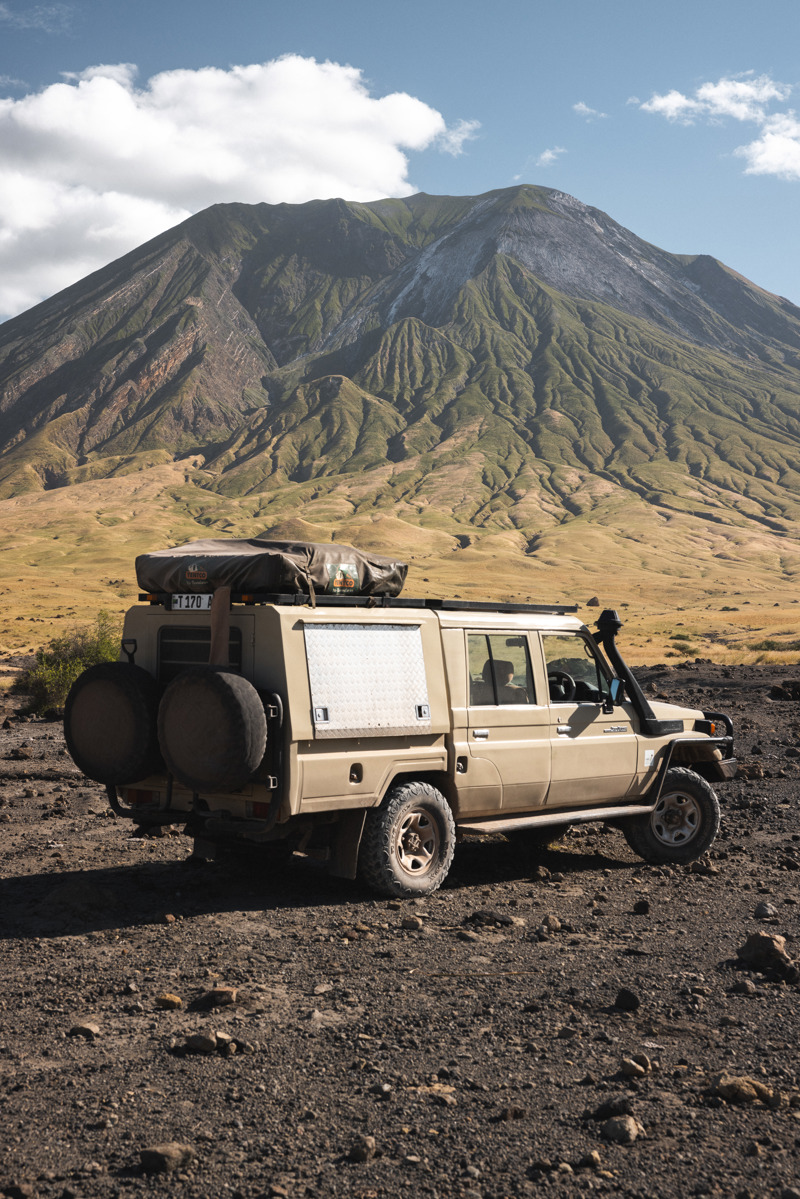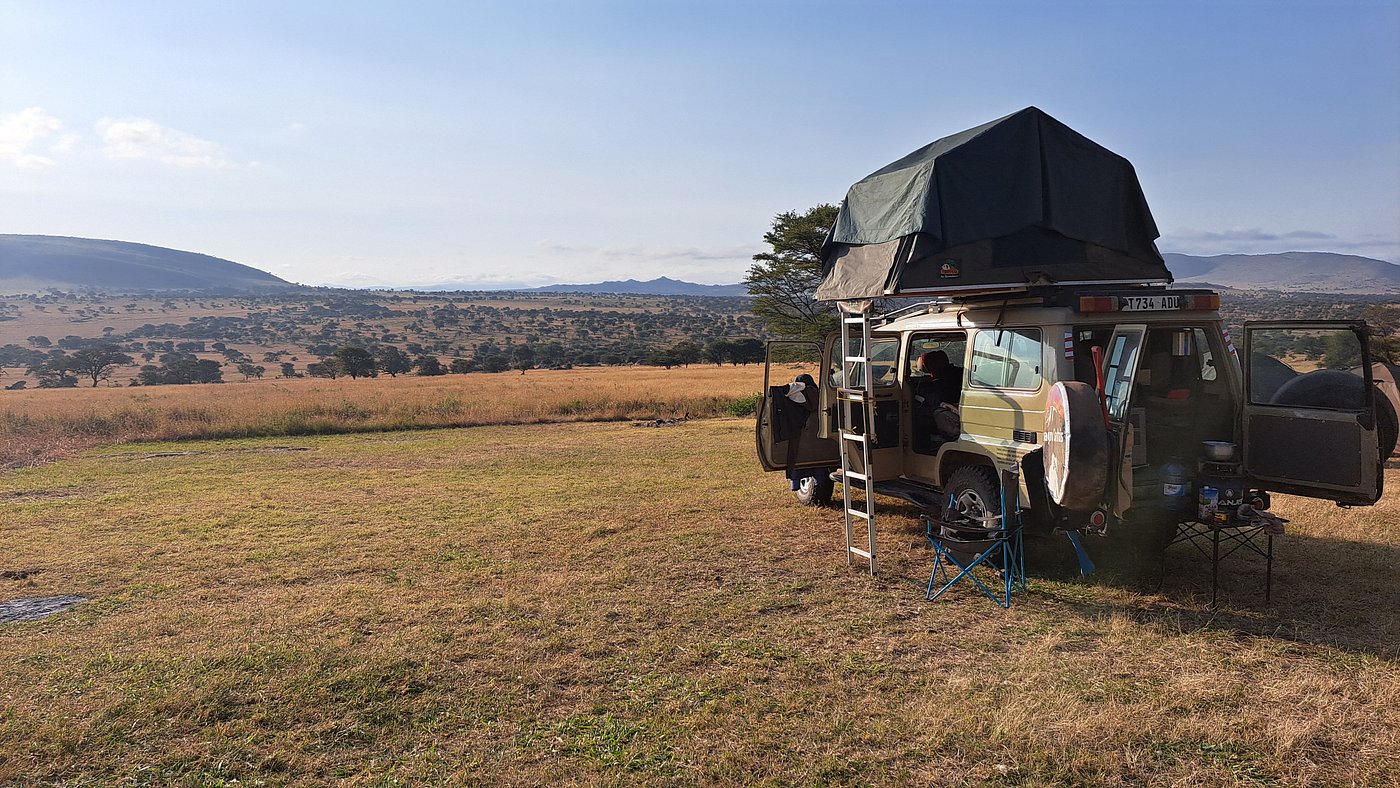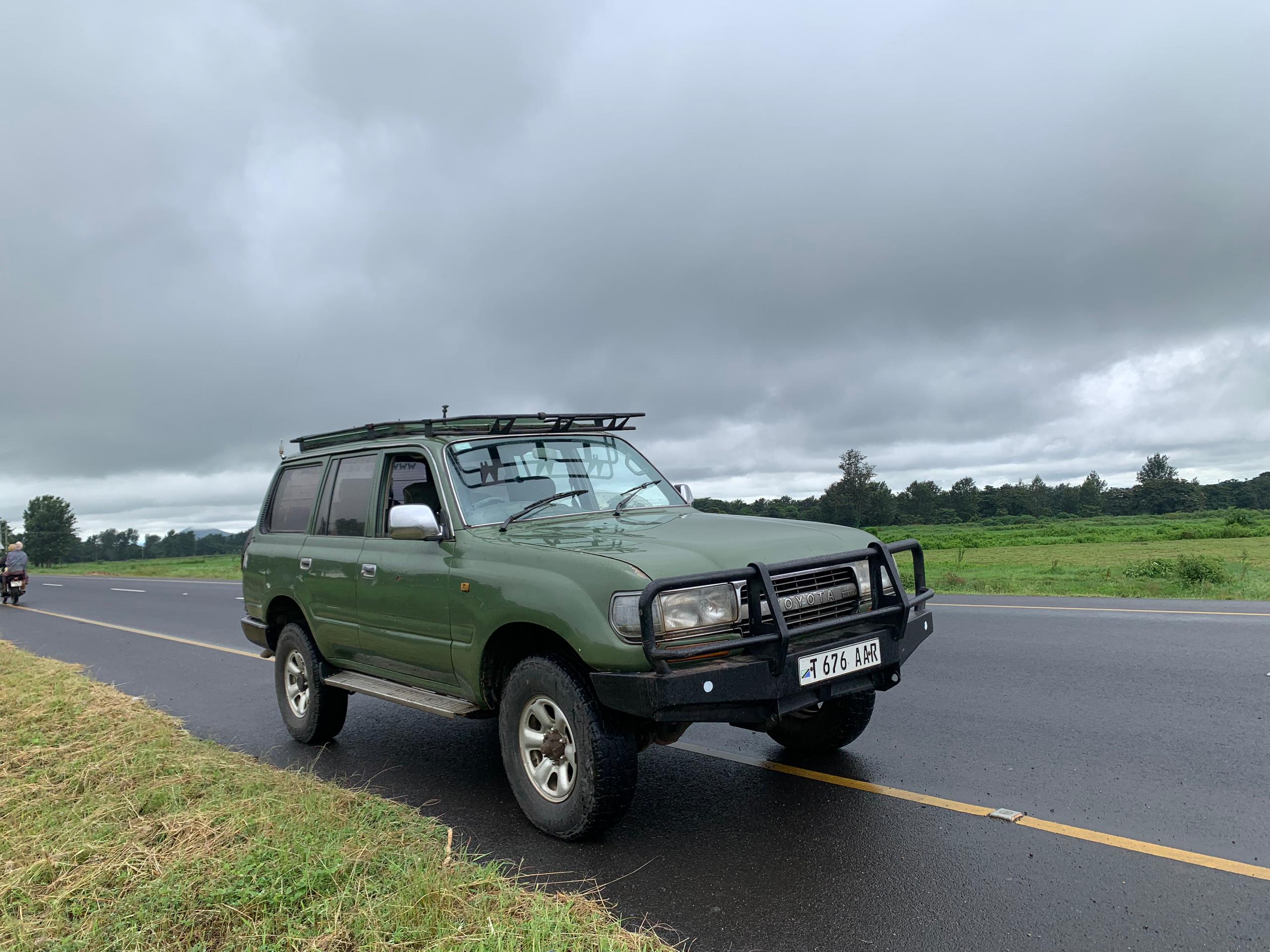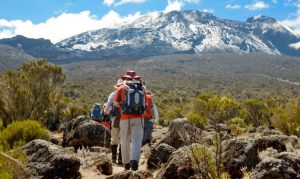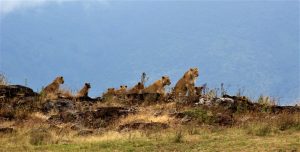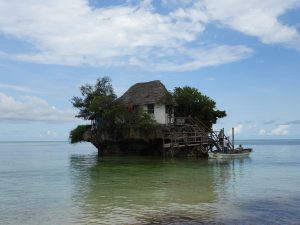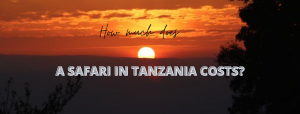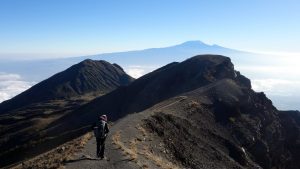A Comprehensive Guide to a Self-Drive Safari in Tanzania
A self-drive safari in Tanzania offers an adventurous and immersive way to explore one of Africa’s most iconic wildlife destinations. This form of travel allows for personal freedom, flexibility, and an intimate connection with the environment. Instead of relying on guided tours, a self-drive safari lets you navigate the savannahs and national parks at your own pace. This guide covers everything you need to know about planning, preparing, and experiencing a successful self-drive safari in Tanzania.
Why Choose a Self-Drive Safari?
Opting for a self-drive safari in Tanzania presents several advantages over a guided tour. First and foremost, the flexibility to determine your own schedule is one of the main draws. You can decide when to start your day, where to go, and how long to stay in each location. This sense of control over your journey can be particularly appealing to independent travelers and those seeking a less structured experience.
Another benefit is the opportunity to have a more personal interaction with Tanzania’s vast wildlife. Since you are in charge of your vehicle, you can stop for as long as you wish when you encounter animals, without worrying about being on someone else’s timetable. You can also deviate from heavily trafficked tourist spots and explore quieter areas, increasing your chances of enjoying moments of solitude in the wilderness.
Moreover, a self-drive safari is often more affordable compared to guided tours. While the initial costs of renting a 4×4 vehicle and securing permits may seem high, the long-term savings can be substantial, especially if you’re traveling with family or friends. Without the expenses of professional guides or group tours, you have the potential to reduce the overall cost of your safari experience.
Planning Your Safari
Planning a self-drive safari requires careful preparation, particularly for a destination like Tanzania, where conditions can be challenging. Below are the key steps involved in organizing your adventure.
- Decide on the Best Time to Visit
Tanzania’s climate and seasonal wildlife movements play a crucial role in determining the success of your safari. While the country can be visited year-round, the best time for wildlife viewing is during the dry season, which typically runs from June to October. During this period, animals are easier to spot as they congregate around water sources and the vegetation is less dense.
The rainy season, from November to May, also has its benefits, particularly for birdwatching enthusiasts and those hoping to witness the wildebeest calving season in the southern Serengeti. However, some roads may become impassable during heavy rains, and it’s essential to be prepared for the challenges that come with traveling in wet conditions.
- Choose Your Route
Tanzania is home to numerous national parks and game reserves, each offering a unique safari experience. When planning your route, consider how much time you have, your budget, and your interest in specific wildlife species or landscapes. Below are some of the most popular parks and regions to include in a self-drive safari.
- Serengeti National Park: Arguably Tanzania’s most famous national park, the Serengeti is renowned for its abundant wildlife, particularly the annual Great Migration of wildebeest and zebra. Covering over 14,000 square kilometers, the park offers ample opportunities for game viewing and exploring diverse habitats, from open plains to riverine forests.
- Ngorongoro Conservation Area: Known for the Ngorongoro Crater, a UNESCO World Heritage Site, this conservation area is a must-visit destination. The crater is home to a high concentration of wildlife, including elephants, lions, and rhinos. The landscapes within the caldera are varied, and the views from the crater rim are impressive.
- Tarangire National Park: Famous for its large elephant herds and ancient baobab trees, Tarangire is an excellent park for those looking to experience a more secluded and intimate safari. The park also boasts a diverse range of bird species and wildlife, making it a favorite for photography enthusiasts.
- Lake Manyara National Park: Nestled between the Great Rift Valley escarpment and Lake Manyara, this park is known for its tree-climbing lions and diverse birdlife. The park is relatively small, making it ideal for a day trip or a brief stopover on a longer safari route.
- Ruaha National Park: For those seeking a more remote and off-the-beaten-path experience, Ruaha offers vast, unspoiled wilderness. It’s home to large populations of elephants, giraffes, and predators such as lions and leopards. The park sees fewer visitors than the Serengeti, providing a more tranquil safari experience.
- Selous Game Reserve: Now part of the Nyerere National Park, the Selous Game Reserve is one of the largest protected areas in Africa. It’s known for its river safaris, which offer a different perspective on the wildlife that inhabits the park’s waterways. The reserve is home to hippos, crocodiles, and a variety of bird species.
- Vehicle Selection and Preparation
The most critical element of a self-drive safari is having a reliable vehicle capable of handling the often rough and unpredictable terrain of Tanzania’s national parks. A 4×4 vehicle with high ground clearance is essential, as many roads are unpaved, rocky, or muddy, particularly during the rainy season.
When selecting a vehicle, it’s also important to consider additional features, such as roof hatches for easier wildlife viewing and camping equipment if you plan to stay overnight in campsites. Some rental companies offer fully equipped vehicles that come with tents, cooking gear, and other essentials, making it easier to camp in the bush.
Before setting off, ensure your vehicle is in top condition. Check tire pressure, engine oil, and other fluids. Carry spare tires, a first-aid kit, and extra fuel, as petrol stations are few and far between in some regions.
- Permits and Park Fees
Tanzania’s national parks require entry permits, which can be purchased at park gates or online in advance. Fees vary depending on the park, but they generally range from $35 to $60 per day for international visitors. Some parks, like the Serengeti and Ngorongoro, also charge additional fees for vehicles, typically based on the vehicle’s weight and type.
It’s advisable to check the latest fees and regulations with the Tanzania National Parks Authority (TANAPA) before your trip, as these can change from year to year. Additionally, some parks have specific rules regarding where vehicles can go, so familiarize yourself with the regulations to avoid penalties.
- Accommodation Options
One of the key advantages of a self-drive safari is the range of accommodation options available. Whether you prefer luxury lodges, tented camps, or more budget-friendly camping, Tanzania offers something for every type of traveler.
- Lodges: Tanzania’s national parks are home to numerous lodges that cater to all budgets. Many lodges are strategically located near wildlife hotspots, providing excellent views and easy access to game viewing areas. While staying at a lodge is more expensive than camping, it offers added comfort and amenities such as private bathrooms, meals, and guided activities.
- Tented Camps: Tented camps provide a more immersive safari experience, allowing you to sleep closer to nature while still enjoying many of the comforts of a lodge. These camps are often semi-permanent and move with the migration, offering prime game viewing opportunities.
- Campsites: For those who prefer a more budget-friendly option, Tanzania’s national parks offer public and special campsites. Public campsites provide basic facilities such as pit latrines and cold-water showers, while special campsites offer more privacy and are often located in scenic or wildlife-rich areas. Camping allows you to experience the sights and sounds of the African bush up close and is a great option for adventurous travelers.
Camping vs. Lodges
A self-drive safari gives you the flexibility to choose between camping and staying in lodges. Camping is often the more affordable option, and it allows you to stay closer to nature. Many of Tanzania’s national parks have designated campsites, some with basic facilities like toilets and showers, while others are more remote and require self-sufficiency.
If you prefer more comfort, Tanzania has a range of lodges and tented camps that offer luxury accommodations, gourmet meals, and even swimming pools. Staying in lodges can provide a break from camping, especially after several days on the road.
What to Pack for a Self-Drive Safari in Tanzania
Packing for a self-drive safari requires careful consideration, as you’ll need to be prepared for a variety of weather conditions and terrains. Below is a list of essential items to bring:
- Clothing: Pack lightweight, breathable clothing for the hot days, and warmer layers for cooler mornings and evenings. Neutral-colored clothing is recommended, as bright colors can disturb the wildlife. Don’t forget a wide-brimmed hat, sunglasses, and a good pair of walking shoes or boots.
- Camping Gear: If you plan to camp, ensure you have a sturdy tent, sleeping bags, cooking equipment, and utensils. Many rental companies provide fully equipped vehicles, but it’s always a good idea to double-check what’s included.
- Navigation Tools: While GPS is useful, it’s essential to have a reliable map of the national parks and surrounding areas. Roads are often poorly marked, and you may find yourself in areas without cellular coverage.
- Food and Water: Stock up on non-perishable food items and carry plenty of water. Many national parks do not have shops or restaurants, so it’s important to be self-sufficient, especially if you’re camping.
- Binoculars and Camera Gear: Wildlife can be elusive, so a good pair of binoculars is essential for spotting animals from a distance. If you’re interested in photography, bring a quality camera with a zoom lens to capture close-up shots of animals in their natural habitat.
- Medical Kit: A well-stocked first-aid kit is a must, especially if you’ll be camping or spending long days in remote areas. Include essentials such as bandages, antiseptics, insect repellent, and any prescription medications you may need.
Driving and Navigation Tips
Driving in Tanzania’s national parks can be challenging, especially for first-time visitors. Here are some key tips to ensure a safe and enjoyable experience:
- Stick to Designated Roads: Many parks have strict regulations about staying on marked roads and tracks. Venturing off-road can damage the environment and disturb wildlife, and it may also result in fines.
- Speed Limits: The speed limit within national parks is typically 50 km/h, but it’s often best to drive slower, especially when wildlife is nearby.
- Wildlife Right of Way: Animals have the right of way in all parks. If you encounter animals on the road, give them plenty of space and be patient. Avoid honking or revving your engine to move them along, as this can stress the animals.
- Driving at Night: Most parks prohibit night driving, as it can be dangerous due to poor visibility and the presence of nocturnal wildlife. Plan to reach your campsite or lodge well before dusk.
- Fuel and Maintenance: Gas stations are scarce in remote areas, so it’s essential to fill up whenever possible and carry extra fuel. Additionally, regularly check your vehicle’s condition, especially after driving on rough terrain.
Wildlife Viewing Etiquette
Tanzania’s national parks are home to diverse wildlife, and observing animals in their natural habitat is one of the highlights of a safari. However, it’s important to follow responsible wildlife viewing practices to ensure both your safety and the protection of the animals.
- Maintain a Safe Distance: Always keep a safe distance from wildlife, especially large animals such as elephants and predators like lions. Approaching too closely can cause stress to the animals and may provoke dangerous behavior.
- Turn Off the Engine: When you stop to observe animals, turn off your engine to minimize noise and prevent disturbing the wildlife. This also allows for a more peaceful and enjoyable experience.
- Respect Other Visitors: If you’re not the only vehicle at a sighting, be considerate of others by not blocking their view or staying too long at one spot.
- Don’t Feed the Animals: Feeding wildlife is strictly prohibited, as it can alter their natural behavior and make them reliant on human food. This can lead to dangerous situations for both animals and humans.
Wildlife Highlights
Tanzania is blessed with an astonishing diversity of wildlife. On a self-drive safari, you’ll have the opportunity to see everything from the Big Five to lesser-known but equally fascinating species.
- Elephants: Found in most of Tanzania’s national parks, elephants are a common sight. Tarangire is especially known for its large herds.
- Lions: The Serengeti and Ngorongoro Crater are prime places to see lions. Look for them lounging under acacia trees or stalking their prey on the plains.
- Leopards: More elusive than lions, leopards are often spotted in tree branches or along riverbanks. The Serengeti and Ruaha are great places to catch a glimpse of these solitary cats.
- Buffalo: Large herds of buffalo roam the savannas, particularly in the Serengeti and Ruaha. Be cautious when encountering these powerful animals, as they can be unpredictable.
- Rhinos: Ngorongoro Crater is one of the few places in Tanzania where you have a good chance of seeing the critically endangered black rhino.
- Wildebeest and Zebra: The Serengeti is famous for the Great Migration, when over a million wildebeest and hundreds of thousands of zebras move across the plains in search of fresh grass.
- Birds: Tanzania is a birdwatcher’s paradise, with over 1,000 species recorded. The wetlands of Selous, Lake Manyara, and the Serengeti are particularly rich in birdlife.
Challenges and Considerations
While a self-drive safari in Tanzania offers a unique and rewarding experience, it’s not without its challenges. Here are a few factors to consider before embarking on your journey:
- Road Conditions: Roads in and around Tanzania’s national parks can be rough, especially during the rainy season. Mud, potholes, and unpaved surfaces can make driving difficult, so be prepared for slow travel and the possibility of getting stuck.
- Safety Concerns: While Tanzania is generally safe for tourists, it’s important to take precautions, especially when driving in remote areas. Always inform someone of your itinerary, and carry a charged phone with emergency contacts.
- Health Risks: Tanzania is a malarial area, so it’s important to take antimalarial medication and use insect repellent to protect against mosquito bites. Additionally, ensure you have the necessary vaccinations before your trip.
- Permits and Fees: Park entry fees, vehicle permits, and camping fees can add up, so it’s essential to budget for these expenses. Some parks also require advance booking for campsites or special permits for certain activities, so plan accordingly.
In Summary
A self-drive safari in Tanzania is an unforgettable way to explore the country’s incredible wildlife and landscapes. With careful planning, the right equipment, and a sense of adventure, you can enjoy a truly immersive and rewarding safari experience on your own terms. From the iconic Serengeti to the remote wilderness of Ruaha, Tanzania offers endless opportunities for discovery and wildlife encounters. Whether you’re camping under the stars or staying in a luxurious lodge, the freedom and flexibility of a self-drive safari allow you to create your own unforgettable journey through the heart of Africa’s wild places.

